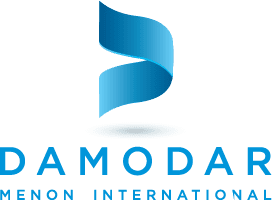Most consumers and textile companies in India don’t think about the lining when buying or making luxury clothes, like suits and coats. However, the lining is the most important element of a garment. It hides the seams, protects the outfit, and gives a pleasant wearing experience.
And as you know, an integral part of our business is to find new textile suppliers and provide the best options to DMI-registered textile companies in India.
We recently identified an artificial fabric material named Bemberg or Cupro with many benefits for garment lining. If you are looking for cotton suppliers for your garment manufacturing unit, consider exploring Bemberg.
What is Bemberg?
Bemberg or Cupro (first created in 1890) is an artificial fiber similar to Rayon. Like how Rayon Modal is extracted from beech tree cellulose yet termed artificial fiber, Bemberg is created from the frizzy fiber surrounding the cotton seed. Farmers often discarded this part of cotton as it was considered useless until a German Rayon producer and exporter manufactured it in 1890.
Later in 1928, he signed a contract with Shitagau Noguchi, who further chemically modified the cellulose pulp, resulting in his trademarked fiber, “Bemberg.”
There’s only one company in the whole world that has the patent to produce Cupro – Asahi Kasei from Japan. Bemberg is a type of Cupro registered by the company.
Why is Bemberg Termed Hybrid?
There are two main types of Fibers in the textile industry – Natural and Synthetic.
And then there is a third category – Artificial or Hybrid fibers. Artificial fibers are created by processing vegetable or plant-based materials which cannot be naturally converted into yarn.
Bemberg is neither a synthetic fiber, like nylon, acrylic, and polyester nor a natural fiber, like silk and cotton. It is because, even though the base material is natural, the cotton seed fiber undergoes severe chemical processing that ultimately changes its original form and property.
The fibers are first transformed into cellulose pulp using Cuprammonium solution, Cupro. Long, continuous filaments are created from the pulp, which are then spun into threads for weaving.
And therefore, Bemberg is categorized as Hybrid or Artificial fiber.
Viscose, Modal, Tencel, and Lyocell are all artificial fibers created from wood cellulose.
There is a fine line between synthetic and hybrid fibers. The key difference between both is that synthetic fibers are derived from Petroleum. They are not biodegradable and can cause allergic reactions.
What are the Advantages of Cupro over Other Lining Materials?
If you are one of the renowned fabric manufacturers in India, you’d know that the wrong lining material can damage your clothing, irritate your skin, and even make the most luxurious apparel almost unwearable.
Disadvantages of Bad Suit Lining
- Traps heat and moisture inside the clothing, making the wearer sweaty.
- Easily attracts dust and pollen from the air onto the outfit, making it look dirty.
- Causes irritation and allergic reaction on sensitive skin.
- Creates static, making the outfit cling to the skin.
Advantages of Good Suit Lining
- Enhances the drape, look, and feel of the garment.
- Easily slides over the skin, making the outfit easier to put on and take off.
- Makes sure the garment isn’t transparent or clingy.
- Doesn’t increase the weight of the outfit and keeps it clean.
What Makes Bemberg a Unique Resource for Fabric Companies in India?
- Bemberg or Cupro is the most comfortable and skin-friendly lining fabric available today. It is durable and strong. The round, thick, yet fine fibers give you a tighter weave. While most tightly woven fabrics are heavy, dense, and unsuitable for summers, Bemberg fibers have a crystalline structure that allows the fabric to breathe and ensure water and air pass through effortlessly.
- It can absorb and retain more moisture than most fabrics, including polyester mimes Bemberg, without becoming sticky.
- Polyester has 0.4 water content while Bemberg has 11, surpassing Cotton’s 8.0 and Silk’s 9.0.
- However, since polyester is cheaper, cotton buyers can blend Bemberg and Polyester to increase the latter’s moisture absorption rate by 30%.
- Cupro or Bemberg is a 100% biodegradable material that can disintegrate as quickly as vegetables when mixed with soil.
- The fabric also has excellent heat-expelling properties, standing at 11, surpassing polyester’s rate of 9.5.
- The fiber’s rounded nature and anti-static properties offer the lowest friction rate with skin. This is why it is the most favored inner lining material of textile companies in India and abroad that create woolen clothing and premium outfits.
- If you want splendid and affordable vegan silk, you might look into Bemberg. It has the softness and sheen of natural fibers and the toughness of synthetic fibers.
- And what’s best? It is eco-friendlier than synthetic fibers. Since Bemberg is manufactured in only a close-circuit unit, the water and other resources are recycled until completely used. The production of Cupro is accredited by GRS (Global Recycled Standards).
If you are looking for Bemberg, connect with our trading experts. We will help you get it at the best price.
You can also buy greige textiles online through our automated trading portal – TEXchange Global. It reduces marketing and selling time and effort by 30% and improves ROI 3X more compared to traditional B2B textile trading. For more information, visit www.texchangeglobal.com.
